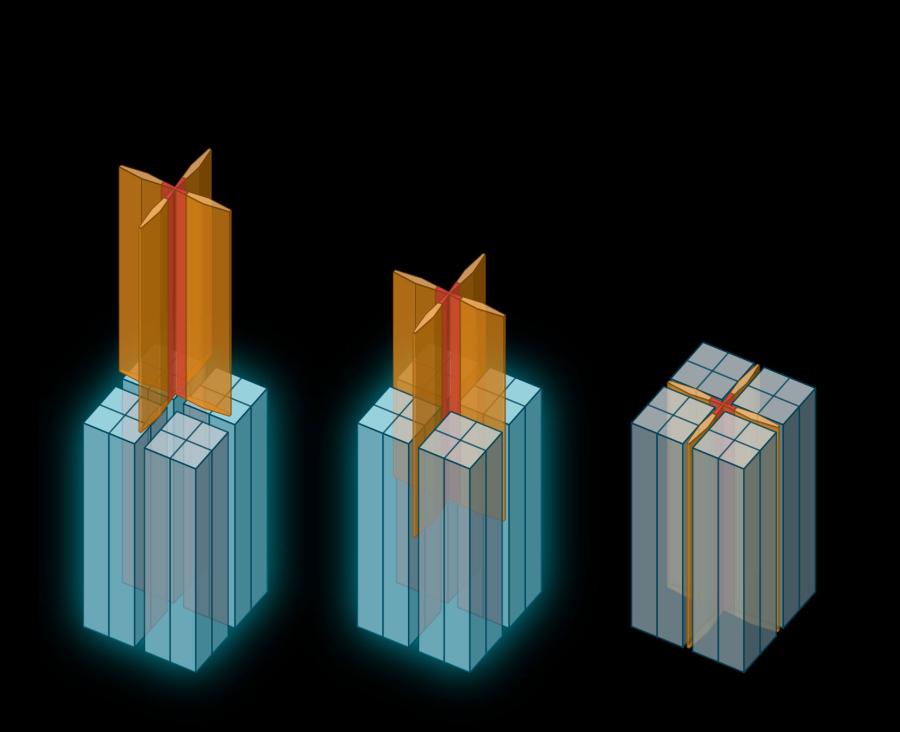ANSTO has recently shut down the OPAL multipurpose reactor to undergo necessary upgrades and maintenance.
One of the main purposes of this planned shutdown is to replace an important reactor component, cold neutron source (CNS), which lowers the energy of neutrons for some of the scientific instruments.
The CNS has reached the end of its operational life of 15 years. The replacement cold neutron source offers increased scientific performance.
Although the reactor is routinely shut down about 10-11 times per year, this pause in operations is lasting a little longer than usual because of the complexity of the task.
The shutdown of a nuclear reactor can be done manually by an operator following a well-established operating procedure. It can also take place in a matter of seconds via an independent automated system that responds to any parameter, such as pressure, temperature, radiation, neutron flow etc., that might be out of the acceptable range.
The control rods
The part of the reactor that brings about the shutdown or a restart is the system of control rods.

OPAL has 5 control rods, made of the element hafnium, which is a neutron absorber.
Neutron absorbers reduce and ultimately stop the fission of uranium atoms.
Four of the flat plate control rods can be moved into the core (in a shutdown) and out of the core (during a re-start). A cruciform-shaped control rod that acts as a regulator remains in the centre of the core.
The control rods are within the Control Rod Guide Box, which extends past the top of the core, so the control rods are protected when withdrawn from the core.
The control rods are cooled by the same light water as the reactor.
The OPAL reactor has an advanced shutdown capacity, which means that if one of the control rods fails to operate, the other rods can effectively shut down the reactor.
During a controlled shutdown, a reactor operator manually engages an independent electric motor to drive the controls into the core slowly.
In an automatic shutdown, a shot of compressed air forces the control rods to drop within two and 300 milliseconds.
If there is a loss of electrical power, the electromagnet that connects the motors to the control rods loses energy and the control rods fall back by gravity into the core. This is an advanced safety feature of the reactor.
Shutddown
Once the control rods are inserted, fission will cease and the temperature of the reactor will decrease. The operation of OPAL generates about 20MW of heat.
Even following shutdown, the reactor will continue to produce some heat because of the ongoing radioactive decay in the fuel. At about 1 minute after shutdown, the reactor power reduces to about 400 kilowatts, which doesn't require extra forced cooling.
The nuclear analysis team undertakes a great many complex computations and calculations to ensure the reactor core always remains safe.
Reactor operators also manage a process known as xenon-135 decay, which is an element that builds up when a reactor is shut down. Xenon is a neutron absorber and the process is known as poisoning out and can impact the re-start of a reactor soon after a shutdown.
Replacing the cold neutron source
The Nuclear Operations team is now preparing for the replacement of the cold neutron source., which is a highly complex task.
To prepare for this, ANSTO built a full-size replica of the reactor pool to use as a training scenario for the event among other extensive measures. Ensuring the safety of the operation has been paramount.
The level of the light water in the pool will be lowered from 13 metres to five metres. A maintenance technician will be lowered in a shielded workbox to install the new CNS.
The installation of the CNS and the restart of the reactor will be featured in separate articles.






